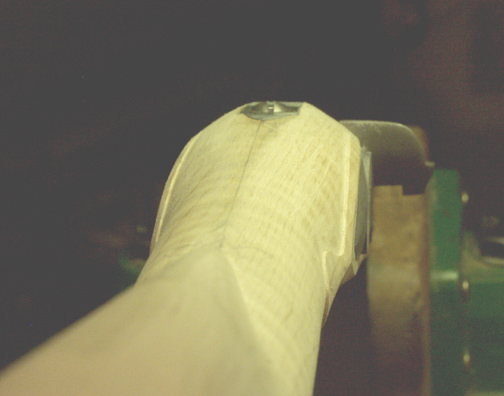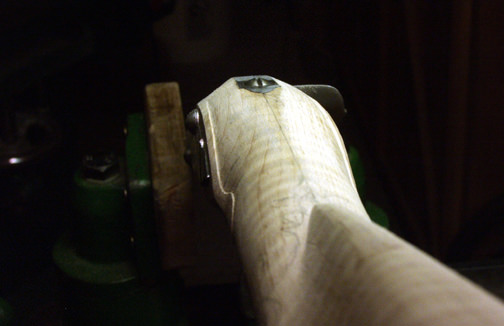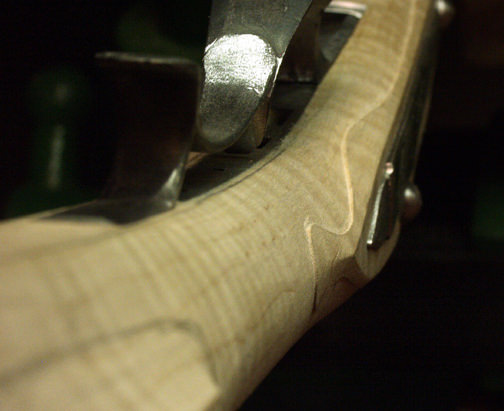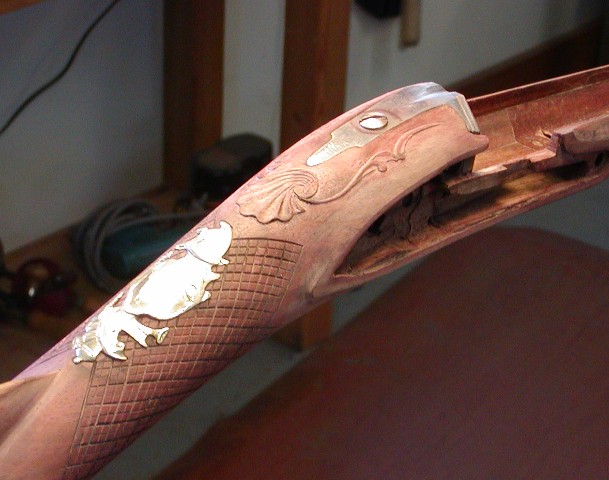IMO, if the sideplate has a chamfer (angular edge on it), the straight, lower area should be inlayed into the wood leaving the chamfered edge exposed.
Before doing this, the lock plate must be installed into the stock.
Once the lockplate is installed, figure out where the rear screw hole needs to be in the lock plate. (It should be in the raised up area just above and forward of the tumbler. In many locks, this raised area is not very large so position the tap drill for the screw hole carefully so there is material all around it.
Once the unthreaded screw hole is in the lock plate, install the lock and use the hole to guide a tap drill sized bit as you drill the rough screw hole back thru the stock to the far side. Once done, enlarge the hole thru the wood so that the lock screw will fit thru it. Now, you know where the center of that "rear hole" should be.
Insert a screw thru the rear hole in the sideplate and into the screw hole in the stock. Now, the rear of your sideplate is located.
I won't get into how to position the side plate for the front hole but if your going to use a real "thru screw" there, that takes more work to figure out where it should go.
When you get the sideplate positioned where you want it, I suggest using a few drops of superglue to hold it in place. Once firmly in place, use a pointed hobby knife to pierce directly down into the wood using the side of the sideplate as your guide.

















